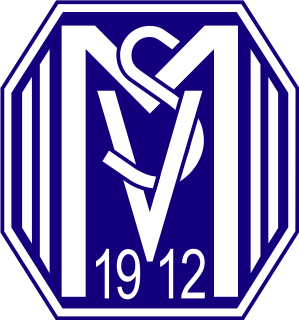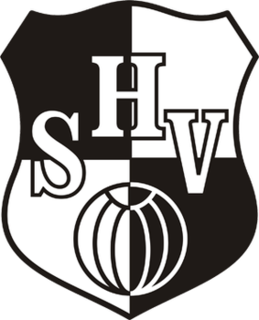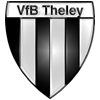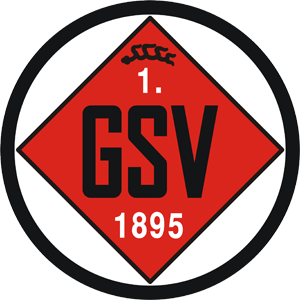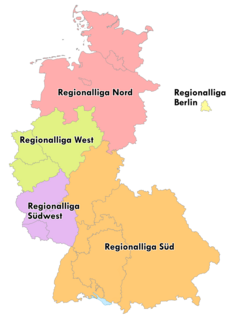
The Regionalliga Süd was the second-highest level of the German football league system. It existed in the south of Germany from 1963 until the formation of the 2. Bundesliga in 1974. It covered the three states of Bavaria, Baden-Württemberg and Hessen.
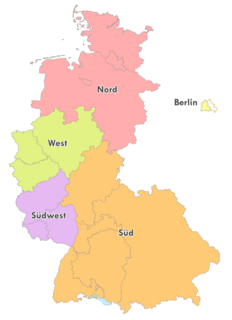
The 1953–54 Oberliga was the ninth season of the Oberliga, the first tier of the football league system in West Germany and the Saar Protectorate. The league operated in five regional divisions, Berlin, North, South, Southwest and West. The five league champions and the runners-up from the south then entered the 1954 German football championship which was won by Hannover 96. It was Hannover's second national championship, having previously won it in 1938 in an epic final against FC Schalke 04 that saw two extra time games before Hannover won 4–3.

The 1964–65 Regionalliga was the second Regionalliga season. The league operated in five regional divisions, Berlin, North, South, Southwest and West. The five league champions and the runners-up from the west, south, southwest and north then entered a promotion play-off to determine the two clubs to move up to the Bundesliga for the next season. Western and southern champions Borussia Mönchengladbach and FC Bayern Munich were promoted. Additionally, the third placed team in Berlin, SC Tasmania 1900 Berlin, was also promoted to replace Hertha BSC, which had their Bundesliga licence revoked.

The 1973–74 Regionalliga was the elevent season of the Regionalliga, the second tier of the German football league system. The league operated in five regional divisions, Berlin, North, South, Southwest and West. The five league champions and runners-up then entered a promotion play-off to determine the two clubs to move up to the Bundesliga for the next season. Northern German and Berlin champions Eintracht Braunschweig and Tennis Borussia Berlin were promoted.

The 1972–73 Regionalliga was the tenth season of the Regionalliga, the second tier of the German football league system. The league operated in five regional divisions, Berlin, North, South, Southwest and West. The five league champions and all five runners-up, at the end of the season, entered a promotion play-off to determine the two clubs to move up to the Bundesliga for the next season. Both promotion spots went to the Regionalliga West with Rot-Weiß Essen and Fortuna Köln promoted.

The 1971–72 Regionalliga was the ninth season of the Regionalliga, the second tier of the German football league system. The league operated in five regional divisions, Berlin, North, South, Southwest and West. The five league champions and all five runners-up, at the end of the season, entered a promotion play-off to determine the two clubs to move up to the Bundesliga for the next season. The two promotion spots went to the Regionalliga West and Regionalliga Süd champions Wuppertaler SV and Kickers Offenbach.

The 1969–70 Regionalliga was the seventh season of the Regionalliga, the second tier of the German football league system. The league operated in five regional divisions, Berlin, North, South, Southwest and West. The five league champions and all five runners-up, at the end of the season, entered a promotion play-off to determine the two clubs to move up to the Bundesliga for the next season. The two promotion spots went to the Regionalliga Süd champions Kickers Offenbach and Regionalliga West runners-up Arminia Bielefeld.

The 1968–69 Regionalliga was the sixth season of the Regionalliga, the second tier of the German football league system. The league operated in five regional divisions, Berlin, North, South, Southwest and West. The five league champions and all five runners-up, at the end of the season, entered a promotion play-off to determine the two clubs to move up to the Bundesliga for the next season. The two promotion spots went to the Regionalliga West champions and runners-up Rot-Weiß Oberhausen and Rot-Weiß Essen.

The 1967–68 Regionalliga was the fifth season of the Regionalliga, the second tier of the German football league system. The league operated in five regional divisions, Berlin, North, South, Southwest and West. The five league champions and all five runners-up, at the end of the season, entered a promotion play-off to determine the two clubs to move up to the Bundesliga for the next season. The two promotion spots went to the Regionalliga Berlin champions Hertha BSC Berlin and Regionalliga Süd runners-up Kickers Offenbach.

The 1966–67 Regionalliga was the fourth season of the Regionalliga, the second tier of the German football league system. The league operated in five regional divisions, Berlin, North, South, Southwest and West. The five league champions and all five runners-up, at the end of the season, entered a promotion play-off to determine the two clubs to move up to the Bundesliga for the next season. The two promotion spots went to the Regionalliga Berlin and Regionalliga Südwest champions Alemannia Aachen and Borussia Neunkirchen.

The 1965–66 Regionalliga was the third season of the Regionalliga, the second tier of the German football league system. The league operated in five regional divisions, Berlin, North, South, Southwest and West. The five league champions and four runners-up, the Regionalliga Berlin runners-up was not qualified, entered a promotion play-off to determine the two clubs to move up to the Bundesliga for the next season. The two promotion spots went to the Regionalliga West champions Fortuna Düsseldorf and runners-up Rot-Weiß Essen.

The 1962–63 Oberliga was the eighteenth Oberliga season, the first tier of the football league system in West Germany. The league operated in five regional divisions, Berlin, North, South, Southwest and West. The five league champions and the runners-up from the west, south, southwest and north then entered the 1963 German football championship which was won by Borussia Dortmund. It was Borussia Dortmund's third national championship, having previously won it in 1956 and 1957.

The 1959–60 Oberliga was the fifteenth season of the Oberliga, the first tier of the football league system in West Germany. The league operated in five regional divisions, Berlin, North, South, Southwest and West. The five league champions and the runners-up from the west, south, southwest and north then entered the 1960 German football championship which was won by Hamburger SV. It was Hamburg's fourth national championship and its first since 1928.

The 1958–59 Oberliga was the fourteenth season of the Oberliga, the first tier of the football league system in West Germany. The league operated in five regional divisions, Berlin, North, South, Southwest and West. The five league champions and the runners-up from the west, south, southwest and north then entered the 1959 German football championship which was won by Eintracht Frankfurt. It was Frankfurt's sole national championship win. The 1959 final was one of only two post Second World War finals to go into extra time, the other having been in 1949.

The 1957–58 Oberliga was the thirteenth season of the Oberliga, the first tier of the football league system in West Germany. The league operated in five regional divisions, Berlin, North, South, Southwest and West. The five league champions and the runners-up from the west, south, southwest and north then entered the 1959 German football championship which was won by FC Schalke 04. It was Schalke's seventh and last national championship and its first since 1942.

The 1955–56 Oberliga was the eleventh season of the Oberliga, the first tier of the football league system in West Germany and the Saar Protectorate. The league operated in five regional divisions, Berlin, North, South, Southwest and West. The five league champions and the runners-up from the west, south, southwest and north then entered the 1956 German football championship which was won by Borussia Dortmund. It was Borussia Dortmund's first-ever national championship and second appearance in the championship final, having previously lost to VfR Mannheim in 1949.

The 1954–55 Oberliga was the tenth season of the Oberliga, the first tier of the football league system in West Germany and the Saar Protectorate. The league operated in five regional divisions, Berlin, North, South, Southwest and West. The five league champions and the runners-up from the west, south, southwest and north then entered the 1955 German football championship which was won by Rot-Weiss Essen. It was Essen's sole national championship while, for losing finalist 1. FC Kaiserslautern, it was the fourth final it played in five seasons.

The 1952–53 Oberliga was the eighth season of the Oberliga, the first tier of the football league system in West Germany and the Saar Protectorate. The league operated in five regional divisions, Berlin, North, South, Southwest and West. The five league champions and the runners-up from the south, north and west then entered the 1953 German football championship which was won by 1. FC Kaiserslautern. It was 1. FC Kaiserslautern's second national championship, having previously won it in 1951.

The 1951–52 Oberliga was the seventh season of the Oberliga, the first tier of the football league system in West Germany and the Saar Protectorate. The league operated in five regional divisions, Berlin, North, South, Southwest and West. The five league champions and the runners-up from the south, north and west then entered the 1952 German football championship which was won by VfB Stuttgart. It was VfB Stuttgart's second national championship, having previously won it in 1950.

The 1962–63 2. Oberliga was the fourteenth 2. Oberliga season, the second tier of the football league system in West Germany. The league operated in three regional divisions, South, Southwest and West. In Northern Germany and West Berlin the 2. Oberliga did not existed, local Amateurligas taking their place instead as the second tier of the league system.



